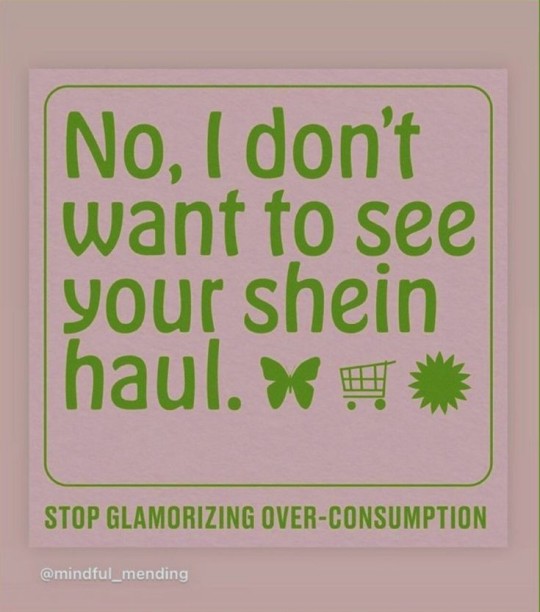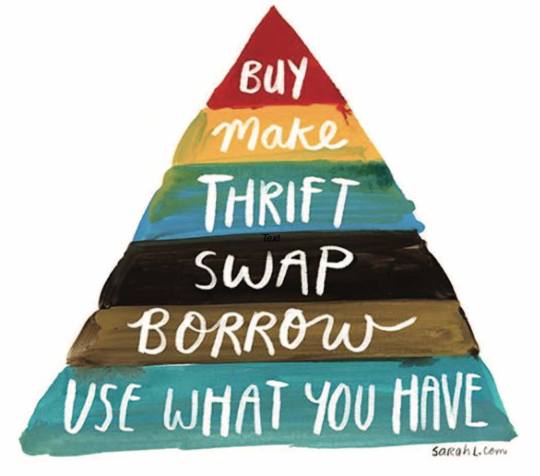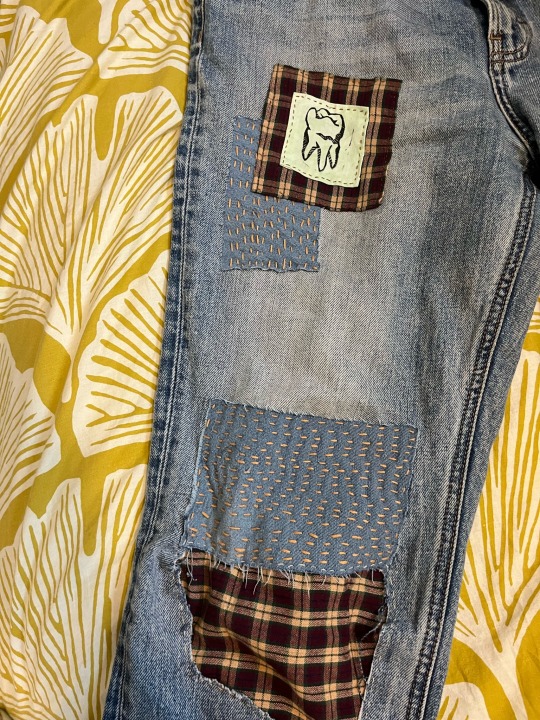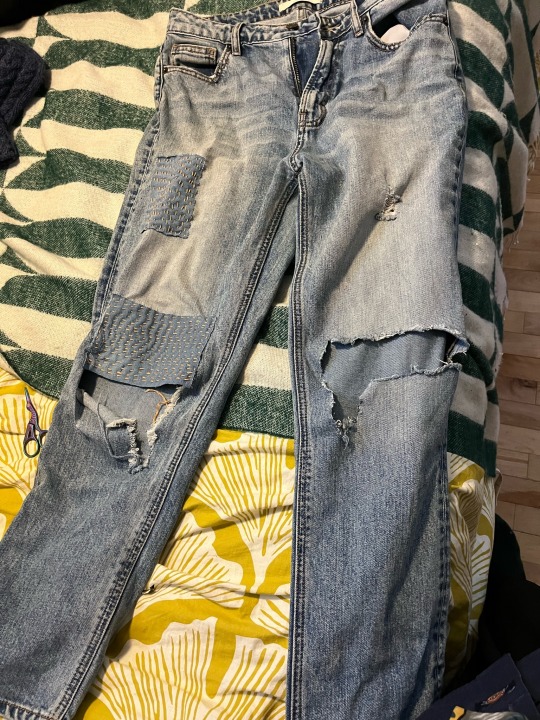#eco-fashion
Explore tagged Tumblr posts
Text



Mackerel patches are heeeere! I'm so so pleased with how these came out.
shop
#solarpunk#artists on tumblr#printmaking#punk#patches#punk patches#blockprinting#diy fashion#diy punk#eco-fashion#solarpunk fashion#fish#fishblr#is a thing apparently?#Here you go fishblr#mackerel#nature art#small business#folk punk#goblincore#sew on patch#my art
227 notes
·
View notes
Text
Waterproof Breathable Textiles: An In-Depth Analysis of Market Trends, Strategies, and Projections
The global waterproof breathable textiles market size is expected to reach USD 2,859.3 million by 2030, expanding at a revenue-based CAGR of 5.7%, according to a new report by Grand View Research, Inc. Increasing demand for comfortable and high-performance apparel that provides protection from environmental factors such as wind and rain is expected to propel market growth over the forecast period.

Waterproof Breathable Textiles Market Report Highlights
In 2022, the polyurethane segment accounted for a revenue of USD 717.6 million of the market in terms of volume, on account of its durability, versatility, and low-cost properties, which makes it suitable for manufacturing cost-effective waterproof breathable textiles
The general clothing and accessories segment is projected to witness a revenue-based CAGR of 5.5% over the forecast period owing to rising demand for the clothing products with lightweight, high strength, waterproof, and insulating properties
The membrane segment accounted for revenue of USD 1,363.9 million in 2022, on account of its superior vapor permeability and waterproofing properties thereby making it suitable for application in manufacturing of lightweight waterproof apparels
Burgeoning consumption for the sports apparels coupled with anticipated rise in demand for winterwear and protective footwear are expected to propel the growth of the market in U.S. at a CAGR of 6.6% over the forecast period
Considerable improvements in the production technologies such as production of extremely thin membranes, membrane incorporation method, and coating techniques are having a significant impact on waterproof breathable textiles market growth
Leading manufacturers are collaborating with specialists in the fields of biochemistry, chemistry, material research, and graphic design to improve the properties and functionalities of the products.
For More Details or Sample Copy please visit link @: Waterproof Breathable Textiles Market Report
Waterproof breathable textiles are lightweight, durable, and easy to dry and care, which makes them ideal for outdoor activities. Increasing participation in activities such as camping, fishing, hiking, hunting, kayaking, and boating is expected to propel the demand for protective clothing and accessories such as raincoats, windbreakers, tents, footwear, thereby impacting the industry positively.
Technological advancements in the textile industry to produce apparel using biomimetic and smart breathable fabrics are expected to contribute to market growth. Additionally, the technological advancements in the areas of cost-effective manufacturing of waterproof breathable textiles are expected to boost the demand for these products.
#Waterproof Breathable Textiles#Waterproof Textiles#Breathable Fabrics#Outdoor Apparel#Technical Textiles#Fashion Innovation#Sustainable Fashion#Textile Tech#Climate Resilient Clothing#Eco-Friendly Textiles#Performance Apparel#FashionTech#Weatherproof Wearables#Textile Innovation#Outdoor Gear#Waterproof Fashion#Eco-Fashion#Fabric Technology#Apparel Innovation#Green Textiles#Fashion Sustainability
0 notes
Text
It’s an open secret in fashion. Unsold inventory goes to the incinerator; excess handbags are slashed so they can’t be resold; perfectly usable products are sent to the landfill to avoid discounts and flash sales. The European Union wants to put an end to these unsustainable practices. On Monday, [December 4, 2023], it banned the destruction of unsold textiles and footwear.
“It is time to end the model of ‘take, make, dispose’ that is so harmful to our planet, our health and our economy,” MEP Alessandra Moretti said in a statement. “Banning the destruction of unsold textiles and footwear will contribute to a shift in the way fast fashion manufacturers produce their goods.”
This comes as part of a broader push to tighten sustainable fashion legislation, with new policies around ecodesign, greenwashing and textile waste phasing in over the next few years. The ban on destroying unsold goods will be among the longer lead times: large businesses have two years to comply, and SMEs have been granted up to six years. It’s not yet clear on whether the ban applies to companies headquartered in the EU, or any that operate there, as well as how this ban might impact regions outside of Europe.
For many, this is a welcome decision that indirectly tackles the controversial topics of overproduction and degrowth. Policymakers may not be directly telling brands to produce less, or placing limits on how many units they can make each year, but they are penalising those overproducing, which is a step in the right direction, says Eco-Age sustainability consultant Philippa Grogan. “This has been a dirty secret of the fashion industry for so long. The ban won’t end overproduction on its own, but hopefully it will compel brands to be better organised, more responsible and less greedy.”
Clarifications to come
There are some kinks to iron out, says Scott Lipinski, CEO of Fashion Council Germany and the European Fashion Alliance (EFA). The EFA is calling on the EU to clarify what it means by both “unsold goods” and “destruction”. Unsold goods, to the EFA, mean they are fit for consumption or sale (excluding counterfeits, samples or prototypes)...
The question of what happens to these unsold goods if they are not destroyed is yet to be answered. “Will they be shipped around the world? Will they be reused as deadstock or shredded and downcycled? Will outlet stores have an abundance of stock to sell?” asks Grogan.
Large companies will also have to disclose how many unsold consumer products they discard each year and why, a rule the EU is hoping will curb overproduction and destruction...
Could this shift supply chains?
For Dio Kurazawa, founder of sustainable fashion consultancy The Bear Scouts, this is an opportunity for brands to increase supply chain agility and wean themselves off the wholesale model so many rely on. “This is the time to get behind innovations like pre-order and on-demand manufacturing,” he says. “It’s a chance for brands to play with AI to understand the future of forecasting. Technology can help brands be more intentional with what they make, so they have less unsold goods in the first place.”
Grogan is equally optimistic about what this could mean for sustainable fashion in general. “It’s great to see that this is more ambitious than the EU’s original proposal and that it specifically calls out textiles. It demonstrates a willingness from policymakers to create a more robust system,” she says. “Banning the destruction of unsold goods might make brands rethink their production models and possibly better forecast their collections.”
One of the outstanding questions is over enforcement. Time and again, brands have used the lack of supply chain transparency in fashion as an excuse for bad behaviour. Part of the challenge with the EU’s new ban will be proving that brands are destroying unsold goods, not to mention how they’re doing it and to what extent, says Kurazawa. “Someone obviously knows what is happening and where, but will the EU?”"
-via British Vogue, December 7, 2023
#fashion#slow fashion#style#european union#eu#eu news#eu politics#sustainability#upcycle#reuse#reduce reuse recycle#ecofriendly#fashion brands#fashion trends#waste#sustainable fashion#sustainable living#eco friendly#good news#hope
10K notes
·
View notes
Text
Idea: sew some cute little moths with scrap fabrics and sew them on holes you have on your clothes so you can keep wearing them :)

#diy#sewing#visible mending#textile art#DIY culture#diy punk#sewing ideas#craft ideas#eco fashion#reduce reuse recycle
23K notes
·
View notes
Text
Embracing Sustainability: Top Sustainable Brands in Austin, Texas
In recent years, the city of Austin, Texas has become a hub for sustainable living and conscious consumerism. From eco-friendly fashion to zero-waste stores, the city is home to a vibrant community of businesses dedicated to reducing their environmental impact. In this blog post, we will explore some of the top sustainable brands in Austin, Texas, that are leading the way in creating a greener…
View On WordPress
#Austin nonprofit#Austin Texas#baskets#Black sustainable fashion#catalog#conscious fashion#eco-fashion#ethical fashion#sustainable bag#sustainable fashion
0 notes
Text







"Rhoēs" villa, Serifos island, Greece,
Sinas Architects
#art#design#architecture#minimalism#interiors#summerhouse#luxuryhouse#luxuryhome#island#greece#serifos#nature#retreat#rhoes#sinas architecture#waves#eco friendly#sustainability#emerald sustrai#sustainable fashion#sustainableliving
236 notes
·
View notes
Text

or temu haul
#txt#mindful consumption#mindful living#slow living#slow fashion#soft living#eco conscious#ecofeminism#solarpunk#ethical consumption#holistic leveling up#leveling up#earth stewardship#that girl#green juice girl#wellness journey#sidewalkchemistry
1K notes
·
View notes
Text


exploring eco-printing through the tatakizome technique, using flowers to create patterns on my dress.
168 notes
·
View notes
Text
The Buyerarchy of Needs

made by Sarah Lazarovic, from her book “A Bunch of Pretty Things I Did Not Buy” ^-^
#saw this on pinterest and felt it should be spread around#i think ive seen this once on here ? still#the buyerarchy of needs#buyerarchy of needs#sustainability#ecopunk#eco punk#solarpunk#environmentalism#sustainable fashion#edited to include full credit 👍👍
858 notes
·
View notes
Text




#2000s emo#emo#alternative#emocore#emo scene#grunge#scene emo#rawr xd#2000s scene#scenemo#frutiger aesthetic#frutiger aqua#frutiger aurora#frutiger eco#frutiger metro#frutiger aero#2014 aesthetic#2014 grunge#2010s#2013#2014 tumblr#2000s nostalgia#2000s#cutt1ng#drain gang#goth fashion#alternative goth#gothgoth#gothcore#goth
200 notes
·
View notes
Text
I've never minded the term aesthetic. But I do agree that fast fashion needs to be put to a stop, that it's ruining the true definition of cultures and subcultures such as goth, punk, grunge and even turning people's cultures into aesthetics which I think is entirely inappropriate for them to make a claim on.
I believe alt subcultures are so much more than a trend. I got into gothic music and even emo music, I've always liked both. When I was in middle school. I liked the music, the literature, dark things before I even found the fashion and fell in love with it.
I've always been an eco warrior, anti capitalist etc. And found that my true self was goth. I can like things that aren't goth. It doesn't make me less goth. But that's the difference between someone whose in a subculture and someone whose doing it for the trend.
I always say be who you are, truly and authentically. Don't hide behind what's trending.
I have no hate towards the word aesthetic itself. But I do see the harm in what capitalism has done using aesthetic culture.
#tiktok#tiktok repost#tiktok video#goth#gothic#goth aesthetic#goth subculture#gothgoth#gothcore#gothblr#goth blog#goth community#dark aesthetic#alt#alternative#grunge#punk#post punk#alternative subcultures#alt subculture#aesthetics#anti capitalism#discussion#my opinion#in my opinion#eco warriors#thrifting#goth fashion#goth music#goth style
176 notes
·
View notes
Text




Finally got around to finishing this visible mending project from this fall.
#solarpunk#printmaking#punk patch#punk#diy fashion#blockprinting#punk patches#diy punk#patches#solarpunk fashion#eco fashion#visible mending#mending#clothing repair#sewing#my art
871 notes
·
View notes
Text
Taking that "it's plastic" meme away from Tumblr until we've all done enough research to know that it doesn't matter which fabric we overconsume and that they're all going to cause environmental destruction if we don't take action to reduce consumption and business/corporation waste.
#Vegan is the least problematic unregulated label as it means “doesn't contain animal products” unlike all the eco labels brands use.#fast fashion#sustainable fashion#text
79 notes
·
View notes
Note
Re: the lack of demand for wool thanks to propaganda causing more waste; my parents live part-time in a small village in Ireland that is about half populated by sheep farmers. ALL those farmers have had to pivot away from wool production to mutton production, because they can't survive off selling the wool anymore. So now they are killing exponentially more sheep than they were killing before, since. You know. You don't have to kill the sheep to harvest the wool!
God, this is incredibly sad
all that wool that could become, not just winter/cold-weather fabric, but summer-weight wool that's excellent for temperature regulation!
and of course, the irony of killing more sheep because P*TA told you the non-lethal sheep product was evil
#ask#anon#wool#textiles#dress yourself in plastic kids!!! for the environment!!! as long as it didn't come from an animal it's eco-friendly!!!#and better for the animals in the long run!!!#don't think too hard about who the dominance of synthetic fabrics in modern clothing hurts and who it helps!!!!#don't use clothes to regulate your body temperature- buy more devices for that!#don't use materials that can be repaired; that doesn't put money in fast fashion CEOs' pockets! I MEAN WHAT#WHO SAID THAT? NOBODY SAID THAT; IGNORE THAT
435 notes
·
View notes
Text

#aesthetic#dark aesthetic#original photographers#photography#artistic photography#alternative#dark art#web core#frutiger metro#frutiger aesthetic#frutiger eco#neon aesthetic#neon#neon lights#trippy#glow#neoncore#colour spectrum#saturated colors#green#lime green#outfit inspiration#fit check#dress up#outfit inspo#outfit#fashionblr#fashion inspo#style#editors on tumblr
20 notes
·
View notes
Text
Underconsumption core trend
On TikTok lately there is a fashion/lifestyle trend going on, the underconsumption trend.
The main types of underconsumption are:
• The Zero Waste Underconsumption Core: Vintage, thrift store, zero waste stores, buy in bulk, local grocery shopping, gardening and sewing.
• The Fashion Brand/Thrift Underconsumption Core: Thrift stores, buy from big shopping brands (few quality pieces), local grocery shopping.
• The Luxurious Underconsumption Core: Buy luxury items (few every year), thrift shopping, zero waste stores, cooking at home, vegan or cruelty-free makeup.
• The Cottage Underconsumption Core: Vintage shopping, buy from the market, local grocery shopping, home making things, cooking mainly at home, crafts.
My opinion choose to do whatever suits you the best. You do not have to get rid of everything or buy new things from a zero waste store and give €500.00 on sustainable fashion brands. First use what you have, open your closet and make three piles. On one side place the clothes you wear, the other one the clothes you love but you are going to wear for sure on a special day and on the other side choose which clothes you haven't worn in years. Do that with shoes, bags, accessories and makeup. The next thing check the makeup and skincare products you buy. Are they safe or are they carcinogenic. You do not need two aprons, you only need one. Stop buying plastic taperware, switch to glass.
Less is more
#fashion magazine#girl blogging#tumblr girls#underconsumption#consumerism#consumer culture#zero waste#eco lifestyle#tiktok trend
27 notes
·
View notes